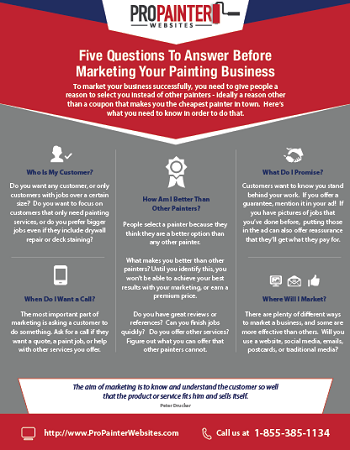Check Out The Influence Of Seasonal Aspects On The Performance Of Commercial Exterior Painting And Identify The Optimum Times To Attain Long-Lasting Results For Your Project
Check Out The Influence Of Seasonal Aspects On The Performance Of Commercial Exterior Painting And Identify The Optimum Times To Attain Long-Lasting Results For Your Project
Blog Article
Post By-Burnham Urquhart
When you're preparing a commercial outside painting project, seasonal aspects can make or break your outcomes. You'll wish to think about exactly how temperature level and humidity impact paint application and drying times. Choosing the best period can guarantee your paint sticks properly and lasts longer. Yet which periods are absolutely the most effective for this kind of job? Allow's explore the crucial elements that can influence your job's success.
The Effect of Temperature Level on Paint Application
When you're intending a commercial exterior painting task, the temperature can considerably influence how well the paint sticks and dries.
Preferably, you wish to paint when temperatures vary between 50 ° F and 85 ° F. If it's too cool, the paint might not cure correctly, causing problems like peeling off or breaking.
On the other side, if it's too hot, the paint can dry out also quickly, stopping correct adhesion and resulting in an unequal finish.
You must also think about the moment of day; morning or late afternoon offers cooler temperature levels, which can be more desirable.
Constantly check the supplier's recommendations for the specific paint you're using, as they frequently provide support on the perfect temperature level variety for optimum results.
Moisture and Its Impact on Drying Times
Temperature isn't the only ecological variable that affects your business outside paint task; moisture plays a considerable role too. High moisture levels can reduce drying out times substantially, influencing the overall high quality of your paint task.
When the air is saturated with dampness, the paint takes longer to treat, which can cause issues like poor bond and a higher danger of mildew growth. If you're repainting on a particularly damp day, be gotten ready for prolonged delay times in between layers.
It's critical to monitor neighborhood climate condition and plan as necessary. Preferably, go for humidity degrees in between 40% and 70% for optimum drying.
Maintaining Click To See More consider mind ensures your job remains on track and supplies a lasting surface.
Best Seasons for Commercial Exterior Painting Projects
What's the best season for your commercial outside paint jobs?
Springtime and very early loss are normally your best bets. During these periods, temperatures are mild, and humidity levels are usually lower, producing suitable conditions for paint application and drying.
Avoid summer season's intense heat, which can trigger paint to dry also quickly, resulting in bad adhesion and surface. In a similar way, winter months's cold temperature levels can impede appropriate drying out and healing, running the risk of the long life of your paint task.
Go for days with temperature levels between 50 ° F and 85 ° F for optimal outcomes. Remember to check what to put on commercial kitchen walls forecast for rainfall, as wet conditions can spoil your task.
Planning around these elements guarantees your paint task runs efficiently and lasts much longer.
Verdict
In conclusion, preparing your industrial outside painting projects around seasonal considerations can make a significant difference in the outcome. By scheduling work throughout the excellent temperatures and humidity degrees, you'll make certain much better bond and drying times. Keep in mind to watch on local weather forecasts and pick the right time of year-- spring and very early fall are your best choices. Taking these actions will certainly aid you attain a long lasting and expert finish that lasts.
